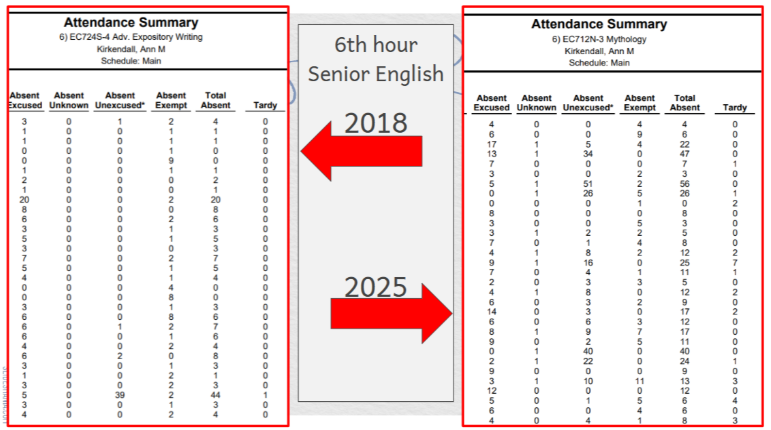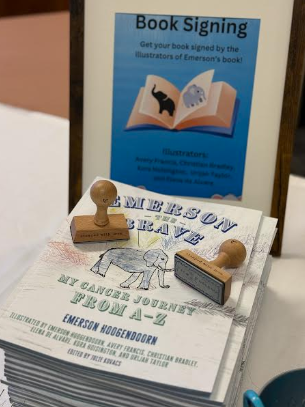One hot June afternoon in 2014, 12-year-old Carissa Wooley was going through her Saturday cardio workout at gymnastics practice. She collapsed.
Her teammates watched in shock as her face turned ghost white while she lay on a floor mat. Teammate Nicole Milligan, who witnessed Wooley’s collapse, said “When she passed out I didn’t know what to do because I was so little, but it was terrifying because no one knew what was happening.”
Paramedics quickly arrived at the gym and rushed Wooley to the hospital while her blood sugar spiked dangerously low. Type I diabetes will be part of her life forever.
“I just remembered thinking my life was over and that I’d never be able to eat anything good ever again,” Wooley said. “That’s a big misconception, and it’s all I knew about diabetes.”
As a 6- pound 7th grader, she knew how hard middle school was, but diabetes created an extra challenge. “It was really rough, and I was trying to figure everything out while also going through puberty as a middle schooler. In 7th grade I became really depressed and almost took my life. But I had a lot of good people around me, so I got better in 8th grade and it’s been getting slightly better throughout the years,” Wooley said.
Now like any other junior, Wooley is busy preparing for the SAT, her AP exams, and college. However, she also spends her free time working with her service dog in training, Phoenix.
Wooley knew from the day she was diagnosed that she wanted a service dog. “I learned about these dogs and I wanted one, but they are $20,000 or up for a trained one, and it takes a while when you’re put on a waiting list.”
Considering the expense and time, Wooley decided to try training her own dog. When an owner takes on the responsibility of training her own pet, “The dog becomes a lot more attached to you and you can train it to do specific things. You can tune it in really close to what you want, as opposed to you getting used to the dog, the dog is getting used to you,” Wooley said.
When Phoenix joined the Wooley family in November of 2018, she was already older than most service dogs are in training. “She is already a year old. Most service dogs start around eight weeks, so that’s been a bit of a struggle, but we just clicked instantly and I knew.”
One specific breakthrough the pair had was recently in May. During Holland’s Tulip Time Festival, thousands of tourists crowded the streets. Wooley saw the festival as an opportunity to give Phoenix a shot at working with a large crowd. Overall, Phoenix did well in her first experience with a large crowd, except for one moment.
“A kid ran up to her and tried to pet her and she kind of went bezerk, so we had to get out of there. Right now we’re just doing public access work. When that is better, we will start introducing blood sugars and stuff,” said Wooley. Little bumps in the road like these are to be expected; it is just part of the training process.
Though there may be a couple of rough patches during training, service dogs have a life-changing effect on people with diabetes. When a diabetic’s blood sugar is dangerously low or high, service dogs are trained to alert their owners that something is wrong. This skill is something Wooley is teaching Phoenix. “We’re going to train her to be able to smell it (the change in blood sugar), and then know what it is and alert me about it by either pawing me or bumping me with her nose,” Wooley said.
“When somebody with diabetes has a high blood sugar, their breath and spit smell really sweet like sugar and candy. When we’re low, it smells really sour. People can pick up on it kind of, but our noses are nowhere near as good as a dog’s.”
One of the main reasons Wooley got Phoenix was for help in college. During this time of her life, Wooley will be more independent than before, and Phoenix can help her maintain a steady blood sugar. “The ultimate goal is (for Phoenix) to go to college with me, so that I can have someone look after me.” Wooley does have medical devices to detect her changes in blood sugar, but Phoenix can detect these changes fifteen minutes earlier.
Wooley isn’t sure which college she wants to attend after she graduates. “I’m still looking for colleges I like without factoring Phoenix in fully, but I do know when I get closer to making a decision I will have to ask for room accommodations,” said Wooley. “Under the Americans With Disabilities law, service dogs are pieces of medical equipment and must be allowed anywhere the handler goes.”
Before they head to college, Phoenix needs more training. Wooley is hoping West Ottawa can be a place for Phoenix to show off what she’s learned and provide her with new experiences. “Our timeline right now is that I’ll hopefully have her for my senior year here at West Ottawa,” Wooley said. However, this change may not be easy, “She would hopefully be better at ignoring people by then, but it would still be a pretty big shock to her system,” said Wooley.
If her plan follows through, Phoenix will be a popular face at WO next year, but there are a few takeaways students should remember. Wooley admits, “The first month will probably be rough because there are so many people here and some people may not get the memo. I’m sure after a while it will become a thing and (Phoenix) is just there.”
When faced with those who aren’t sure what to do with Phoenix, Wooley responds with, “Just ignore her. I know she’s adorable, but she’s to help me.”
Life can be unpredictable, but having someone to go through it with makes it easier. The bond between a girl and her dog is unbreakable, but when a life-threatening condition comes into play, it brings a whole new meaning to the saying, “a girl’s best friend.”







